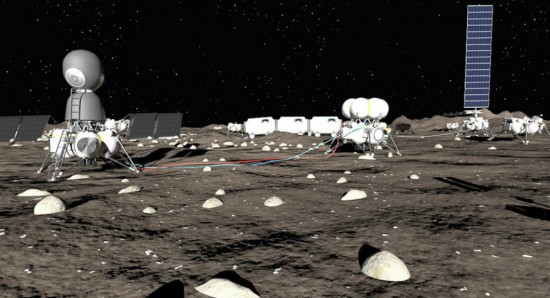October 29, 2015 – Early this week Vladimir Solntsev, President of S. P. Korolev Rocket and Space Corporation (RSC Energia), told a technology conference audience in Moscow that “a manned flight to the moon and lunar landing is planned for 2029.”
The Russians under the former Soviet Union engaged in a race with the United States during the 1960s to send a human crew to the Moon, but could not match the Apollo Program, and in the end tried to one-up the Americans by sending a robotic mission ahead of Apollo 11.
In the 1950s and throughout much of the 1960s, the Soviet Union space program was the most advanced in the world. Sputnik 1 in 1957 was the first artificial satellite. Sputnik 2 shortly thereafter launched the first animal into space. In 1959 the Soviets launched the first probes to the Moon and sent us back the first pictures of the far side. In 1961 Russia sent Yuri Gagarin into space, the first human to orbit the Earth. Clearly the Soviets were vested in a lunar program but ran into problems in building a launcher of sufficient power to deliver the kind of payload needed for a human mission to the Moon. Instead the Soviets became bogged down in low-Earth orbit human missions evolving the Soyuz spacecraft that is still in use today. But Soyuz wasn’t going to get a cosmonaut to the Moon and back despite its many capabilities and teething problems led to the death of a cosmonaut on its maiden voyage. The Soviet human space mission program took a hit from which it never recovered.
By the mid-1960s an attempt to create a lunar program timetable penciled in a mission to land a cosmonaut crew on the Moon in 1968. It never happened. Instead rocket malfunctions, launch pad explosions and the loss of another space crew on an Earth orbital mission made the dream of being first to the Moon with a human crew no longer possible.
A series of new technology test missions were fraught with problems and the Soviets were left with only attempts at getting a robot lander. On July 13, 1969, Luna 15 was sent to the Moon to land, scoop up a rock sample and then return to Earth. Its landing system failed ending in impact with the lunar surface almost on the same day that Neil Armstrong took his first steps.
Solntsev’s announcement, 46 years after the race to the Moon ended, is not a surprising one. Russia has been seeking an independent space program since its falling out with the United States over Crimea and Ukraine. Russia plans to leave the International Space Station by the mid-2020s. The country has engaged with China’s space program looking at cooperative ventures. The Chinese have made no bones about it that they intend to go to the Moon and Mars. And so Russia may be in an entirely different space race with their immediate geopolitical neighbour over the coming decade.
What’s Russia’s timetable?
- To land a new Luna robotic spacecraft at the Moon’s south pole in 2025.
- To build capacity through a series of heavy carrier launches over five years so that subsequent human missions can establish a permanent base on the lunar surface by 2029.
Currently RSC Energia is designing and building test lunar habitations in a program called Luna-2015. The latest 8-day ground-based isolation mission is crewed by a number of female future cosmonauts. The goal – to test habitability and ergonomics for the planned lunar mission to help in determining the final design of the components that will be part of Russia’s future Moon colony.












